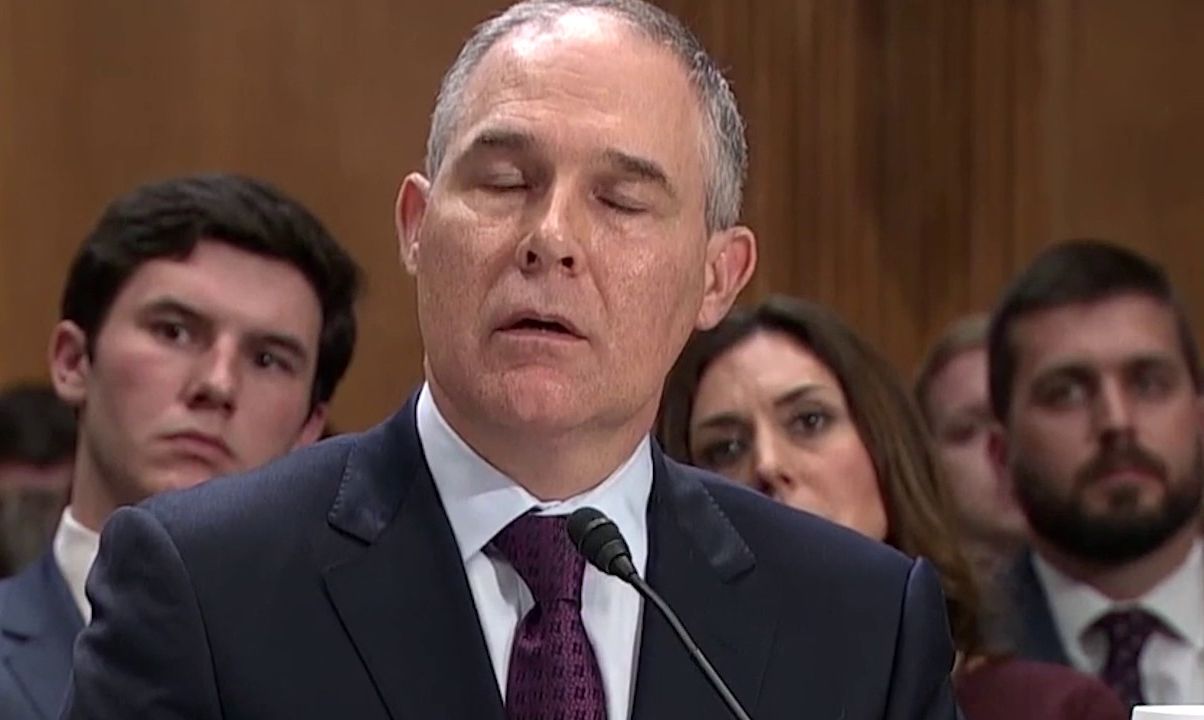Hits: 8012
Trump’s EPA justifies its repeal of the Clean Power Plan (CPP), a 2015 regulation which limits planet-warming carbon dioxide emissions from the US power plants, by lying about costs and benefits.
The agency claims that compliance with the Obama-era regulation will cost electric power producers up to $33 billion annually by 2030. Two years ago, the agency estimated that the plan’s emission goals could be achieved at less than $8 billion.
Actually, since 2015, the costs of zero-carbon wind and solar energy and low-carbon natural gas have fallen substantially. So, the rule’s pollution targets can be achieved even more cheaply than the agency initially thought.
Under Scott Pruitt, Trump’s EPA director, the Trump administration is relying on gimmicks to inflate the CPP’s projected costs and minimize its benefits.
The EPA has more than tripled the plan’s projected price tag merely by changing how the agency accounts for energy savings.
In 2015, the agency projected that states and utilities would meet the rule’s emission targets in part by investing in energy-efficiency programs that the upfront expense (i.e. better insulating a building) is often more than offset by the reductions in electric bills.
The Trump EPA ignores energy savings when calculating the costs of the plan. As a result, the new cost projections include almost $20 billion of generating expenses for electricity.
The Trump administration very much wants the CPP to sound like a bad idea so that getting rid of it will sound like a good one.
Propping up such intimidating cost estimates, the EPA next set about making the plan’s environmental benefits look meager. In 2015, the agency estimated that the rule would yield up to $20 billion per year in avoided harms from climate change. In the agency’s new analyses, that number drops to a mere $3 billion.
The EPA says its original estimates focused on global climate impacts, its new calculations are limited to harms that the plan would avoid within the US.
How does one calculate “domestic” climate damages with any accuracy? In our globally interconnected economy, climatic and economic events in other countries will inevitably affect the US.
Further, if it were possible to isolate climate damages in the US, it would be laughable to ignore foreign harms when evaluating pollution standards. Carbon dioxide emissions in the US harms other countries just as emissions from other countries harm the US.
Remarkably, even with most of the CPP’s climate benefits excluded, its overall benefits would still outweigh its costs by as much as $28 billion in 2030. This is because, in addition to cutting carbon dioxide emissions, the shift to cleaner sources of electricity encouraged by the plan would also reduce deadly particulate matter and other harmful air pollution. The EPA’s original analysis found that these reductions would result in big public health benefits, preventing up to 3,600 premature deaths each year.
It is easy to believe that most of climate change’s dangers remain in the distant future, and almost anything that far-off seems uncertain. This uncertainty is a big reason that climate change is such a hard political problem to solve.
Trump’s EPA invented flimsy excuses to make the CPP look like a bad deal for the American people, with projected costs that outweigh projected benefits, arguing that compliance to the rule will come at an incredibly high cost to public health and welfare.
The Trump administration’s decision to repeal the CPP — and promote coal use — is clearly bad for the planet’s future, because it will aggravate climate change.
The most effective strategy for the opponents of repeal is to focus on the here and now. And unlike some anti-environmental policies, this one will begin to harm Americans very quickly.
Coal plants release a stew of pollutants, including mercury (which damages children’s brains) and particulate matter (which includes bits of unburned coal small enough for people to inhale). These bits of coal cause asthma, strokes, lung damage and heart attacks. Worldwide, particulate matter is the seventh-largest cause of avoidable deaths.
Pruitt has a long record of running government agencies on behalf of the energy industry. First in Oklahoma and now in Washington, he’s enacted policies to increase industry profits, no matter the health consequences.
Buried deep in the proposed rule change that the EPA released recently, the organization acknowledges part of the damage it is doing: “Some of the benefits of reducing these pollutants would have accrued to children.” Indeed. But in Pruitt’s EPA, keeping children from breathing coal doesn’t seem to be a priority.
——-
This post is based in part on a NYT op-ed by Richard Revesz and Jack Lienke and a series of tweets from Fred Krupp of the Environmental Defense Fund.

